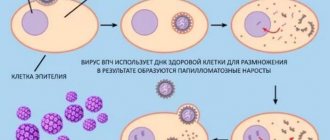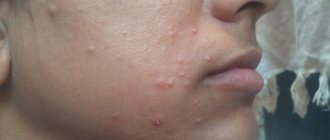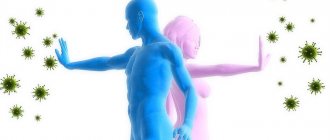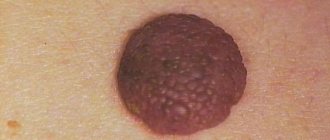Human papillomavirus is quite common and is observed in more than 80% of the population. Some viruses are harmless, while others, including HPV 59, pose a particular threat to human health and life. Pathogenic microorganisms of this group can provoke cancer. If a person has a neoplasm, then it is necessary to find out what type the causative agent of the disease belongs to. If papillomavirus type 59 is detected, you should immediately consult a doctor and begin treatment.
HPV type 59 provokes the growth of papillomas, which can progress to the cancerous stage.
General information
Often, females are susceptible to the disease, but it happens that it also appears in men.
Not everyone knows, HPV type 59 in women, what is it?
Experts say that eighty percent of the fairer sex are carriers of human papillomavirus infection. In those whose immune system the virus cannot overcome, HPV type 59 does not manifest itself. Microorganisms of this group injure the DNA of healthy skin cells and mucous membranes of the genital organs. It happens that the disease affects the rectum, after which the virus mutates into condylomas and papillomas with sharp ends, which develop into oncology.
Pregnancy with papillomavirus
Often this type of papillomavirus is found in women carrying a child. In this case, constant monitoring by a doctor is required until delivery. The attending physician will select the most appropriate treatment, taking into account the severity of the disease. When the fetus is in the womb, pathogenic microorganisms do not affect its development in any way, since amniotic fluid and the placenta are located around it. The risk of infection occurs during natural childbirth. If a woman has condylomas on the cervix or vagina, then the child becomes infected. To prevent this, doctors perform a caesarean section.
Main reasons
The root causes of the virus entering the human body may be:
- presence of bad habits (drinking alcohol, drugs, or smoking);
- lack of proper sleep;
- poor nutrition;
- excessive physical stress.
There are the following routes of infection with HPV type 59:
- failure to comply with hygiene rules when using a swimming pool, bathhouse, sauna, as well as other similar public places;
- using someone else’s hygiene items (for example, a towel, razor, toothbrush);
- sexual intercourse with a partner who is already infected with papillomavirus (including oral sex);
- contact with an infected person at home;
- by airborne droplets (extremely rare).
Methods of treating papillomavirus type 59
Treatment of oncogenic strains of the papilloma virus, including type 59 in women and men, is a responsible task that excludes amateur efforts; it must be taken as seriously as possible. If non-dangerous genotypes of the pathogen can be easily derived using traditional methods, in this case such a line of behavior is excluded. Therapy for HPV strain 59 involves three stages: removal of papillomas, taking antiviral and immunomodulatory drugs, and control tests.
Removal of type 59 papillomas
Today there are many ways to get rid of growths surgically. In the case where there is no reason to assume the presence of an atypical and cancerous stage, it is allowed to remove growths using the following methods:
- Application of laser . Removal is performed using a laser beam. The cost of the operation ranges from 600-1500 rubles (250-650 hryvnia) depending on the size of the papilloma and the chosen clinic.
- Cryodestruction . Getting rid of growths using liquid nitrogen. The operation is performed either with ordinary tweezers, cooled to a temperature of -200 degrees, or with a special apparatus. The cost of the operation depends on the size of the tumor and the instrumentation of the operation. Removing one papilloma on the human body with type 59 virus less than 5 mm in size will on average cost about 300 rubles (130 hryvnia), for a papilloma larger than 5 mm you will have to pay 600 rubles (250 hryvnia).
- Chemical destruction . Burning out growths with a special chemical composition. The average cost of the operation is 600 rubles (250 hryvnia).
- Radiosurgery . Exposure of growths to radio wave radiation. The price of the operation, again, is determined, first of all, by the size of the growths, so the destruction of a 2-mm papilloma will cost 500 rubles (200 hryvnia), and a 10-mm papilloma will cost 1,500 rubles (650 hryvnia).
All of these methods have a short recovery period and minimal risk of complications, however, if the presence of cancer cells is suspected, the operation is performed in the classical way - the growths are cut out with a scalpel
. For human papillomavirus type 59, traditional resection is often recommended; its cost is always calculated strictly individually.
Drug therapy for papillomavirus 59 strain
The photo shows medications for the treatment of HPV type 59
Despite the fact that the disease manifests itself primarily in the form of tumors on the body, one should not forget that we are still talking about a virus, which means that the destruction of growths must be accompanied by antiviral and immunomodulatory therapy.
Let's consider effective drugs against human papillomavirus type 59:
- The most popular drug that stimulates the immune system is Viferon. Its analogs are also often prescribed - Anaferon, Kipferon, Cycloferon, etc. The advantage of these drugs is that they stimulate the production of interferon, that is, in fact, they just strengthen their own immunity, which means they do not harm the body. The cost of the above drugs is about 200 rubles (85 hryvnia).
- Among antiviral drugs, Panavir is often prescribed - it has no direct analogues and is not cheap, about 1,500 rubles (650 hryvnia). The low-cost Amizon and Acyclovir are similar in action; their price fluctuates around 300 rubles (130 hryvnia). Antiviral drugs are prescribed only when there are already morphological changes in tissue.
- Another group of drugs are cytotoxins . These are antitumor drugs, and their use is required only if a malignant tumor has begun to form. The most popular are Podophyllin and its analogue Condilin. The cost of medicine is about 600 rubles (250 hryvnia).
It is worth noting that immunomodulatory therapy should be carried out both before and after surgery to remove tumors, right up to a control test. For oncogenic human papillomavirus type 59, such therapy is especially important.
- Read about traditional methods of treating HPV 56
Features of development and stages
The 59 genotype of the virus provokes the appearance of papillomas on the skin or on its mucous membranes. The growths can have different shades and diameters. The development of the disease goes through various stages:
- The first stage is the manifestation of the virus. The disease is just beginning to develop, and there are no visible symptoms of its entry into the body. Its presence can be diagnosed only by passing certain tests;
- The second stage is the formation of condylomas. The presence of growths that have a pointed shape indicates that healthy cells are already affected by the virus. Neoplasms may appear on the skin of the genital organs or their mucous membranes. Their sizes are still small, and their shade is pink or brown;
- The third stage is the appearance of dysplasia. The cellular structure begins to change. Experts consider this condition to be precancerous. The tumor has not yet become malignant, however, in the absence of effective treatment, there is a possibility of a high oncogenic risk;
- The fourth stage is the formation of carcinoma. This is the period when condyloma is already advanced, as a result of which it becomes malignant. There is a high probability that metastases will appear in the body.
Viral genome structure in women
The virus cell does not have an outer shell and is enclosed in a substance with a volume of 55 nm. HPV can affect all segments of the population, regardless of gender and age categories. It is possible to study in more detail using protein digestion and subsequent analysis of individual fragments under the influence of gel electrophoresis.
A detailed study of the colored solutions revealed a number of specific features of the viral cell. The latter have a name. The original cell of infection is the caypocyte. It destroys healthy cells.
Methods of infection
The most popular route of infection with HPV type 59 is sexual intercourse with an infected person. In the absence of a contraceptive such as a condom, the likelihood of the virus entering the body reaches sixty percent. A person whose immune system is weakened or a child can easily become infected by using other people's personal hygiene items.
Infection can occur intrapartum. When a baby is born naturally, contact with the affected mucous membrane of the mother can be dangerous. This phenomenon practically never occurs in practice, because a pregnant woman undergoes all the necessary tests before giving birth. If she has HPV type 59, specialists prescribe effective treatment or perform delivery by cesarean section.
There is an increased likelihood of infection with the papilloma virus in people undergoing chemotherapy or after major surgical interventions that cause decreased immunity.
Consequences and danger
Of course, the most dangerous complication of HPV 59 is cancer. Most often it affects the cervix. For men, the risk is much lower, but the chance of getting a prostate tumor still exists. In addition to this deadly disease, papillomavirus can cause:
- infertility;
- impotence;
- vision problems;
- hearing impairment;
- chronic intestinal disorder.
Remember that HPV of any type affects the entire body, although it affects the reproductive system most of all. If you miss the onset of complications, the treatment will ultimately be much more complex than with early therapy. So try not to be promiscuous, and also maintain good personal hygiene.
You can also learn about several facts about HPV: how you can become infected with it, as well as what tests you need to take.
Symptoms
If a person has papillomas or condylomas in the reproductive system area, he should urgently consult a specialist. When there are no external symptoms, it is possible that the disease is located inside the genital organs, or in the rectum area. The following symptoms will help determine this:
- problematic bowel movement, accompanied by pain and discomfort;
- a deceptive feeling of intestinal fullness;
- excessive flatulence, pain in the gastrointestinal tract;
- altered stool containing blood;
- causeless loss of body weight;
- feeling of weakness, dizziness.
When a doctor diagnoses the presence of genital warts in the rectal area, and the patient complains of any of the symptoms described above, they often talk about infection with HPV type 59. People who are carriers of the infection or have a hereditary tendency to its occurrence should be attentive to their health and well-being. They must be registered with an oncologist, as well as monitor the status of the virus and undergo regular examinations.
Symptomatic manifestation of infection
If the patient is highly resistant to the action of pathogenic microflora, the papillomavirus lives in healthy cells for several years in a dormant state. The development of HPV infection occurs due to a weakening of the body's defenses caused by hormonal changes, the use of an intrauterine device, and suppression of the immune system by drugs. The main sign of pathological processes is the formation of growths in the form of papillomas or genital warts on the external genitalia of women and men. However, the papillomavirus can act from the inside, and a deterioration in the patient’s general condition is observed against the background of the following symptoms:
- Problems with stool (difficulty bowel movements or upset);
- Painful bowel movements;
- The appearance of blood streaks in the stool;
- Flatulence, bloating, nausea;
- Feeling of incomplete bowel movement.
Diagnostic methods
When a specialist discovers neoplasms on the skin in the area of the genital organs or anus of a woman, the patient undergoes a cervical examination and urethroscopy. This will determine how advanced the disease is. If papillomavirus type 59 is detected, a biopsy is taken and colposcopy is performed. Testing is also done using acetic acid. It is used to treat the cervix, after which it is lubricated with Lugol. If the solution is unevenly absorbed into the tissue and a mosaic pattern appears, experts indicate infection with papillomavirus.
Cytology is done using the PAP testing method:
- the first and second classes indicate that the tissues have not yet been modified;
- the third class indicates that a histological examination is required;
- grades four and five confirm that the growth has malignant cells.
By examining skin tumors using PCR, doctors can see large epithelial cells.
Diagnosis of the disease at the initial stage and initiation of timely therapy significantly reduces the oncogenic risk.
HPV 59 detection methods
When papillomas and condylomas appear on the body, especially in the genital area, one can suspect the presence of HPV in the body. You should definitely visit a doctor for diagnosis and further treatment.
Diagnosis must be carried out in two sexual partners. After an examination by a gynecologist and a urological consultation, additional research methods will be prescribed:
- Colposcopy with collection of a sample for histological examination, revealing the presence of a cancer process.
- Cytological smear of the discharge of the urethra, cervical canal, studying modified cells.
- PCR analysis that determines the presence of the virus in the blood.
- A DNA test that will determine the type of virus present in the body.
- Biopsy of growths, determining the presence or absence of tissue degeneration.
All these studies will help determine the presence of the disease, its stage and prescribe treatment that will alleviate the condition and relieve unpleasant symptoms. Timely detection of infection and proper therapy make it possible to avoid the development of serious pathologies that pose a threat to human life.
Treatment methods
When the genital organs or uterus are affected, the appearance of neoplasms causes discomfort to the person. They are not difficult to injure, so there is a high probability that the growth will bleed. Papillomavirus type 59 can be cured, however, after diagnosing the disease. the patient will have to undergo a long period of therapy.
Drug therapy
To cure HPV type 59, you must go through three important mandatory steps:
- Use Epigen Fight spray, which is used to chemically or mechanically treat papilloma on the patient’s skin. How exactly to use the drug is determined only by a specialist;
- The use of antiviral drugs that help stop the spread of the virus in the future. Often, Epigen spray is recommended for this, which is used for intimate hygiene, Panavir, or Isoprinosine ;
- Use of immunomodulatory drugs. For this purpose, vitamin complexes are used, as well as agents that stimulate the protective functions of the immune system.
A person must be aware that therapy for human papillomavirus infection must be carried out in a comprehensive manner. If you ignore any of the treatment steps mentioned above, the disease will continue to spread throughout the body.
Diagnosis of papillomavirus type 59
If you find yourself with papilloma, this is always a reason to see a doctor. But! If one of the above warning symptoms is added to this, this means that seeking medical help should be urgent.
PAP test is mandatory , which is deciphered as follows:
- Class 1 - cells are not affected by human papillomavirus type 59;
- Class 2 - there is a slight change in cells, an inflammatory process is possible, general tests are prescribed;
- Class 3 - changes in cell nuclei are recorded, histological examination is prescribed;
- Class 4 - morphological signs of malignant changes are recorded;
- Class 5 - cancer cells are clearly identified.
Modern histological examination for the detection of human papillomavirus, both type 59 and others, is carried out using the PCR technique
, which makes it possible to unambiguously and with the highest degree of probability identify pathological cells and prescribe adequate treatment.
If during a routine gynecological examination the doctor discovers papillomas on the genitals, he prescribes a tissue biopsy of the growths and colposcopy
- examination of the cervix through a microscope.
Colposcopy is usually accompanied by a mosaic test.
: the cervix is treated with a special solution of acetic acid, and then with Lugol’s solution; if the solution is unevenly absorbed by the tissues, a conclusion is drawn about the presence of pathology.
- Read about the reasons for the activation of HPV 45 in women
First signs in men and additional symptoms
When HPV activity increases in men, the following symptoms are observed:
- The appearance on the skin or mucous membranes of benign neoplasms in the form of a papilla or small nodule. Papillomas can be located not only on the external parts of the body, but also in the rectum;
- The appearance of bumps , a local change in the structure of the skin without changing its color;
- The localization can be any , often formations appear in the groin area.
Usually, emerging papillomas do not cause physical discomfort.
Sometimes additional symptoms occur, including the following:
- Painful sensations manifested during the act of defecation, urination or sexual intercourse;
- Local bleeding at the sites of papillomas and subsequent formation of ulcers characterized by prolonged healing;
- Itching sensation , leading to scratching of certain areas; this symptom is the most dangerous, since it can lead to mechanical damage to formations and the development of complications;
- The appearance of a specific unpleasant odor.
Types of HPV in men
The HPV group is quite extensive and includes more than 150 viral types, but less than 10% of genotypes that can lead to the development of cancer are dangerous.
Depending on the clinical manifestations, the main varieties are distinguished:
- Papillary growths are the most common type and are common warts. They do not stand out in color or have a darker shade, the main localization is the skin of the face, torso and feet;
- Inferted papillomas are also known as intraepithelial formations. Their main feature is their special flat shape and deep ingrowth into the epidermis; localization can be any;
- Genital warts are another common type; They are small formations attached to the skin or mucous membranes on low stalks. There is an external resemblance to cauliflower; individual formations or groups of pink or brown papillomas may be found. The most common sites of localization: the area around the genitals and anus, oral cavity, rectum and urethra;
- Flat condylomas are considered the most dangerous to human health; their appearance is often accompanied by physical discomfort in the form of itching and burning. This type has a tendency to progress and gradually grow, which leads to tissue deformation. Localization can be any.
How to treat HPV in men?
If papillomas appear, especially those causing physical discomfort, you should immediately seek professional advice, since treatment in the initial stages is much easier and eliminates the risk of developing dangerous complications.
In total, there are 3 directions to solve the problem:
- Completing a course of drug therapy , which involves the use of pharmacological drugs;
- Undergoing treatment using modern medical equipment or treatment using a hardware method;
- The use of traditional methods for eliminating such formations.
Drug therapy
The basis of drug therapy is immunostimulating drugs with antiviral effects.
They are designed to suppress the activity of HPV, inhibit the spread and occurrence of new papillomas, as well as normalize the functioning of the immune system.
Completing the course allows you not only to get rid of emerging signs of the disease, but also to prevent possible relapses in the future by activating the body’s natural defenses.
Drugs that perform such functions include:
- Cycloferon - has a complex effect, a drug based on meglumine acridone acetate allows you to suppress viral activity, strengthen the immune system and reduce inflammation that can occur if the papilloma is accidentally damaged. The daily dose is 3-4 tablets, the course includes taking up to 40 tablets. A month after completion of treatment, a repeat course is recommended. A package of tablets, depending on its volume, costs from 350 to 850 rubles ;
- Amiksin is an antiviral drug with immunomodulator functions, the release form is tilorone-based tablets. The basic treatment regimen involves taking 1 tablet per day, starting from the third day, taken every other day. The course dose is 10 tablets; if necessary, the doctor can make adjustments to this regimen. The cost ranges from 600 to 900 rubles .
Cycloferon Amiksin
Antitumor drugs based on podophyllotoxin have a cauterizing effect; they are included in complex therapy to eliminate existing formations.
The cream is intended mainly for the treatment of papillomas on the female genital organs; for men, the product in the form of a solution is more suitable.
Similar drugs are also prescribed after surgical removal of formations to prevent their reappearance.
Below are some types of funds:
- Condilin - after application it causes necrosis of the outer parts of papillomas and their subsequent elimination. The bottle is equipped with an applicator for spot treatment; no more than 50 formations can be treated in one procedure. Application is carried out 2 times a day for 3 days, after which you should pause for 4 days and repeat the course. The total course of therapy should not exceed a month. You can purchase the drug at a price of 600 rubles ;
- Podophyllin - in the form of a solution is intended for 10 treatments of papillomas and 20 treatments of the places where they were located after their removal. The procedure is repeated daily, if local inflammation occurs, with a break of several days. The cost starts from 900 rubles .
Condilin Podophyllin
Drugs with a pronounced antiviral effect are also an important part of therapy; they are prescribed to stimulate the production of the body's own antibodies.
The following remedies are effective for HPV:
- Isoprinosine - in the form of tablets based on inosine pranobex, is especially effective in localizing papillomas in the groin area or on the mucous membranes of the larynx. The daily dosage is up to 6-8 tablets, a total of 2-3 doses per day. The duration of the course is from 2 weeks to a month, determined by the attending physician individually depending on the characteristics of the clinical picture. For relapses or the appearance of genital warts, 6 tablets per day are prescribed for 10 days. A total of 3 courses are required, with a break of 2 weeks between them. The cost in pharmacies ranges from 600 to 1500 rubles ;
- Panavir is available in various forms; a gel based on natural plant extracts is effective in the treatment of papillomas. The product is intended for external treatment; it must be applied in a thin layer to areas of the skin with formations; the procedure is carried out up to 5 times a day. Depending on the positive dynamics, the duration of treatment is from 5 to 10 days. The cost of a 30 gram tube is about 800 rubles .
Isoprinosine Panavir
Hardware methods to combat HPV in men
Drug therapy can suppress the activity of HPV, get rid of the appearance of new formations and strengthen the immune system, but it does not always help eliminate existing papillomas.
In this case, the specialist may prescribe one of the following methods:
- Surgical excision of papillomas has been rarely practiced in recent years and is considered an outdated technique;
- Electrocoagulation – removal of papillomas using electric current;
- Laser removal is a modern method of getting rid of papillomas; its advantages are the absence of bleeding and the risk of wound infection, painlessness and rapid healing;
- Cryotherapy is exposure to low temperatures, which leads to freezing of formations and their subsequent removal.
Why is HPV dangerous in men?
The degree of danger is determined by the type of virus, the location of the papillomas and the likelihood of their accidental damage due to systematic exposure.
Adverse factors can provoke the following consequences and complications:
- The occurrence of malignant neoplasms;
- Deterioration of potency;
- Blocking the lumen in the urethra;
- Infertility.
Complications most often develop when mechanical injuries and damage to papillomas are caused or in the presence of sexually transmitted diseases.
Which type of HPV is considered the most dangerous?
The main criterion for HPV classification is differences in DNA structure.
The most dangerous viruses for men are the following types:
- HPV types 6 and 11 - lead to the formation of genital warts; these viruses can cause the development of respiratory papillomatosis. In rare cases, the disease is fatal;
- HPV type 70 is considered a precancerous condition; the high activity of this virus requires treatment under the supervision of a specialist;
- HPV group a9 - includes more than a dozen types of the virus, increases the risk of developing cancer.










